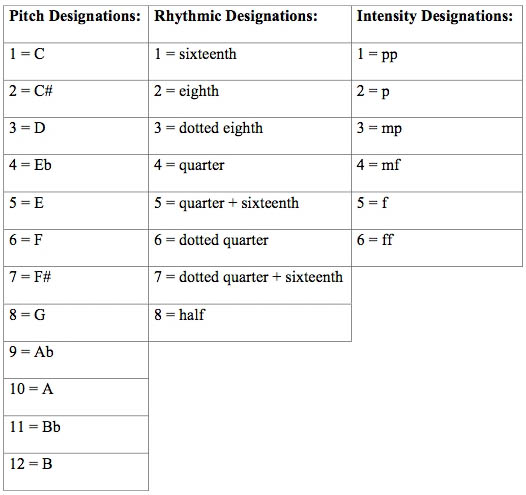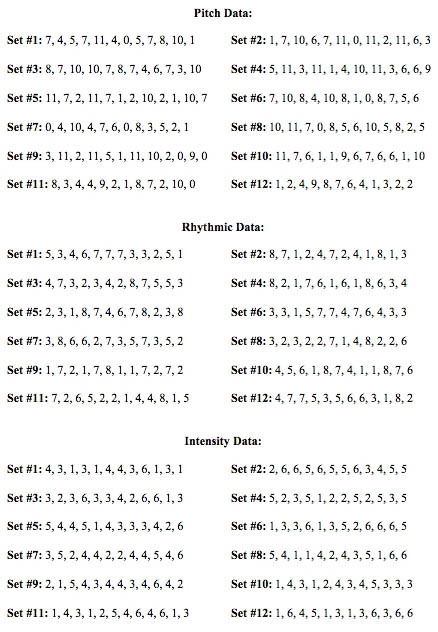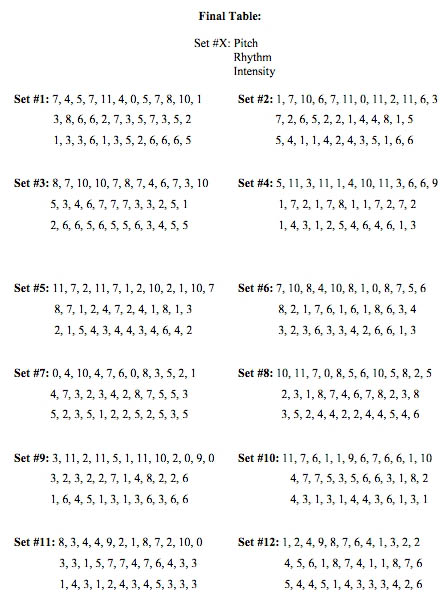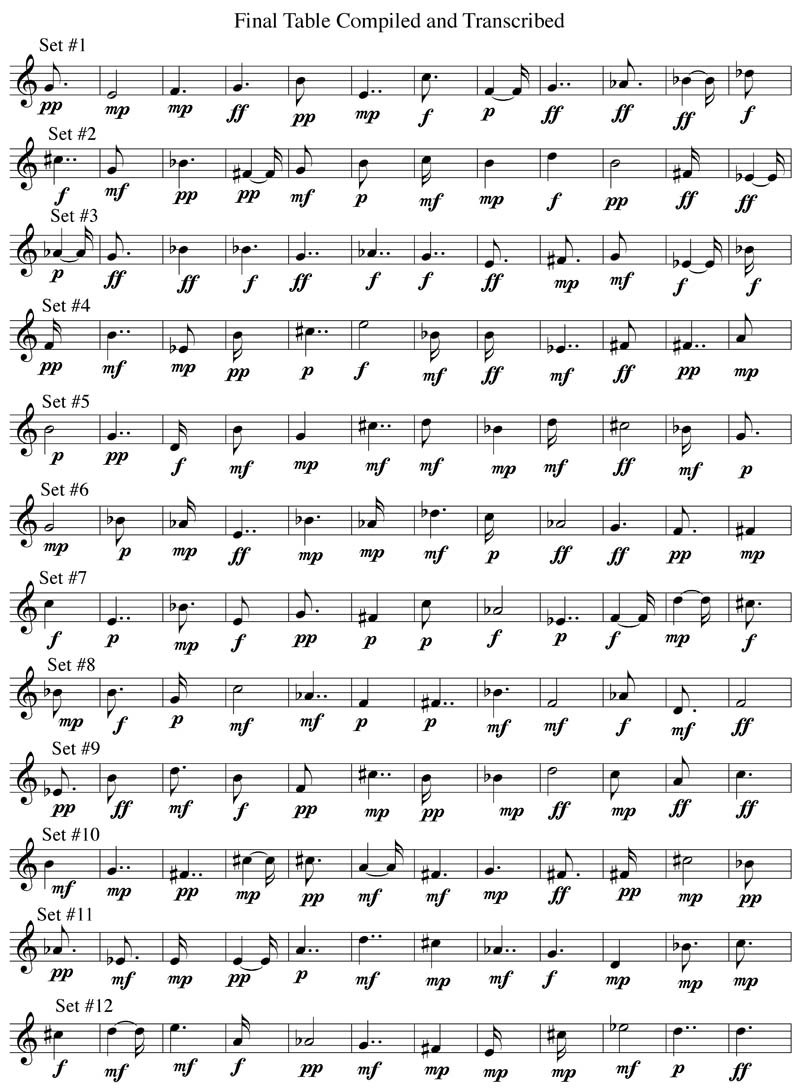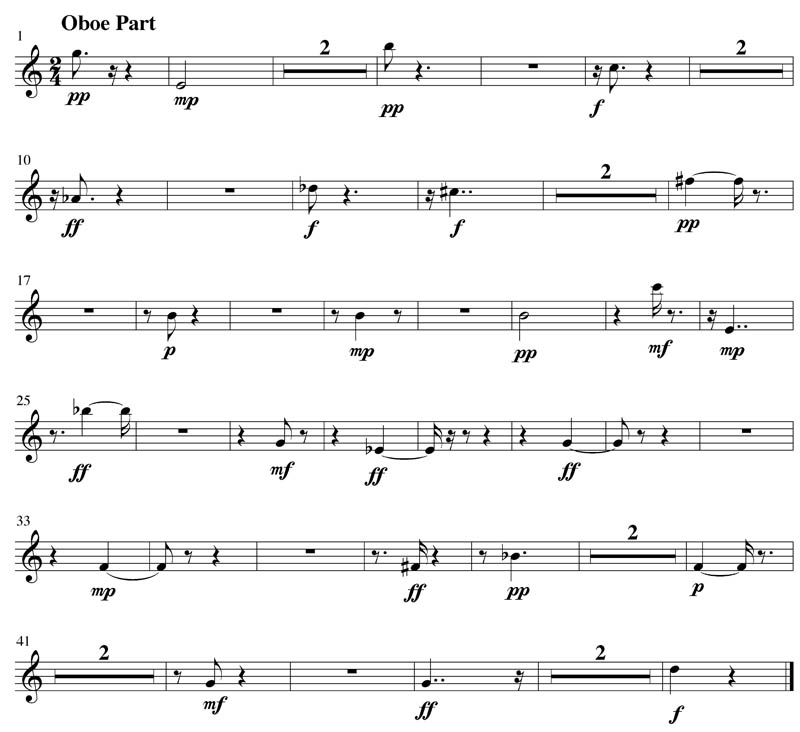When the intention is to present a traditional score based on procedures involving chance, the composer needs to decide which musical parameters are to be determined through some method of indeterminacy, and what the method itself will entail. The aforementioned American composer, John Cage, employed a variety of methods, including using characters of the I Ching (an ancient text featuring a series of symbols that relate to Chinese cosmology and philosophy), while the Greek composer Iannis Xenakis (1922-2001) used scientific data compiled by a computer in some of his earlier compositions to provide him with a body of source material (pitches, rhythms, and other parameters) from which he made conscious decisions as to what would go into the final score. One composer/artist, Dick Higgins (1938-1998), even used a machine gun to puncture holes into score paper that he then distributed for performance. Whatever the approach, it often asks the composer to draw upon extra-musical concepts that can imaginatively be woven into a musical context.
1. Developing a Method to Provide for Indeterminacy. For our brief composition below, we will use a simple, computer-based random number generator to first choose twelve sets of twelve notes (one for each possible pitch) wherein each set does not have to contain unique numbers. These numbers will then be converted into pitches (see chart below). Following this, the generator will be used to create twelve more sets of numbers, which will be converted into durations, and twelve sets for intensity (see chart below).
2. Applying Indeterminately Derived Raw Material. We will now have three groups of twelve sets of figures, which will be compiled at the discretion of the composer into a final table of twelve sets of notes with assigned durations and intensities. We will then assign two sets to each of six instruments. These sets will be divided into single cells, cut out, and dropped onto score paper prepared for each part by the composer (inspired by the 1917 collage, Squares Arranged According to the Laws of Chance by artist Jean Arp (1886-1966)). This outcome will determine when in the piece each note will occur. However, it will be at the discretion of the composer as to what register each note will sound for the particular instrument in the final engraved scores (note, only parts in a piece such as this are necessary since there is no inherent organization between the instruments).
3. Final Score. For our piece, we have employed the following instruments (and their associated sets):
1. Oboe (Sets #1-2)
2. Clarinet (Sets #3-4)
3. French Horn (Sets #5-6)
4. Bassoon (Sets #7-8)
5. Violin (Sets #9-10)
6. Violoncello (Sets #11-12)Note that instruments where duration is difficult to control in the type of isolated-attack planned texture (such as harp, marimba, and the like) were avoided.
Sample part:
4. Aesthetics. In all, the composer only decided on the instrumentation, tempo, overall length (48 bars of 2/4 time - based on twice the number of total pitches each instrument is allotted and the greatest duration of any one note), number of attacks, register for each attack, and the limitations placed on the chance data - a computer and gravity determined the remainder of the piece. The aesthetic here is partially based on a philosophical perspective regarding the purpose of art to include ways to liberate artists from their self-conscious egos and, in turn, allow for experiences that lie beyond certain kinds of creative manipulation to occur.
mp3 download
